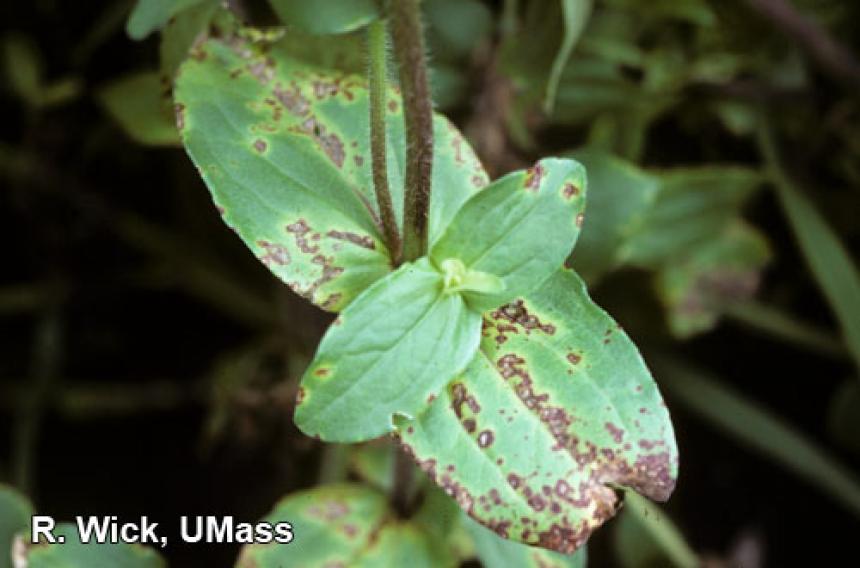Xanthomanas leaf spot begins with dull gray water soaked areas. Yellow or tan spots can develop across the leaf. As the disease progresses, spots turn brown and angular so lesions could be confused with Alternaria leaf spot.
Infected plant material is probably the most important source of contamination; the bacteria can survive in dried leaves for as long as a year and it can reside on the foliage for several moths before initiating disease. Plants with leaf spots should be discarded. Workers should wash their hands after handling diseased plants or soil. Diseased plant debris should be removed from the growing area. Handling of wet foliage should be avoided. Since bacteria can be spread from plant to plant by irrigation water, minimize splashing and reduce leaf wetness by spacing and practices such as ebb and flow irrigation. Copper hydroxide (Champion, Nu-Cop 3) is registered for the control of Xanthomonas on ornamentals. Bactericides are only marginally effective in controlling bacterial diseases. Sanitation and environmental control are extremely important.
Angular leaf spot is caused by Xanthomonas campestris pv. zinniae. Bacterial diseases are most aggressive in hot weather as bacterial growth is favored by high temperatures. Overhead or sprinkler irrigation aggravates bacterial blights. Xanthomonas species are carried on seed; start with pathogen-free seed. If treated seed is not available-seed can be treated with a dilute bleach solution (10%) for 15 to 30 minutes or hot water. Be sure to test a small batch of seed for sensitivity to these treatments. Practice strict sanitation and rigorous scouting to identify and remove infected plants in the early stages before the pathogen spreads. Few bactericides are available and effectiveness varies.
